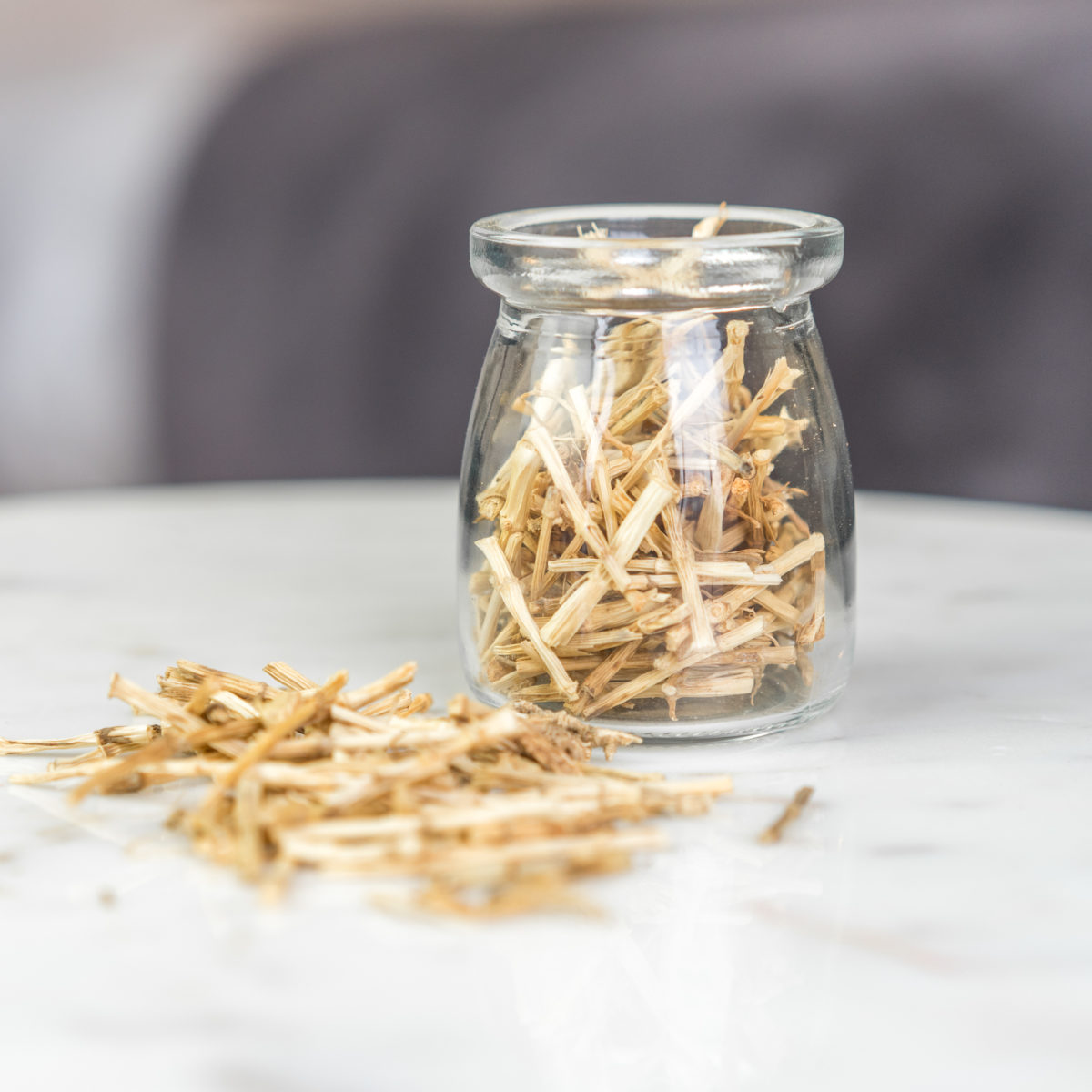
COMMON NAME (Chinese Name)
Imperata Rhizomes (Bai Mao Gen)
BOTANICAL NAME
Imperata Cylindrica
COMMON NAMES
Wooly Grass, Cotton Wool Grass, Cogon Grass
USES
The most common usage of oral wooly grass supplements include anti-inflammatory and diuretic treatments. Additional studies show that oral supplements made of Imperata rhizomes are also both antibacterial and antiparasitic, making them effective therapies for both gastro-intestinal infections (which often causes diarrhea) and parasites like tapeworms and roundworms.
What’s more, other studies support claims that extracts made from the flowers, leaves, and roots all have some degree of antibacterial, emollient (skin softening), and styptic (blood clotting) properties when used topically. Others use Imperata rhizomes topically for treating ringworm and other fungal infections of the skin. Most recent research wholeheartedly supports the existence of antibacterial and antifungal properties of these whole-plant extracts.
When used in combination with other herbs, oral Imperata rhizome supplements can help treat and reduce the discomfort associated with various painful mouth conditions (like mouth ulcers, gingivitis, and bleeding gums). Likewise, compound supplements containing Imperata rhizome have been shown to effectively reduce the redness, swelling, and itching that occurs with the development of skin allergies. More recent research also supports the claims of various dietary supplements containing Imperata rhizome that aim to help reduce body fat.
PREPARATION & ADMINISTRATION
The roots and underground stems (rhizomes) of Imperata plants are edible and have a long history of use for nutritional supplementation. Many medicinal uses of Imperata rhizomes make use of the dried, sliced rhizome, though there are some reports of also using Imperata leaf and flower extracts both orally and topically. In addition to standalone Imperata rhizome supplements (as well as their derivative pills, powders, and extracts), Imperata rhizome is an ingredient in popular compound herbal supplements, like Gubentongluo and Pei Tu Qing Xin granules. Oral Imperata rhizome supplements have also been co-prescribed for use with western medicine in the treatment of chronic illnesses.
PRECAUTIONS
There are no known side-effects of Imperata as it is a food grade herb. Use caution when supplementing orally if you are already taking or are sensitive to diuretic medications.
You should consult with a certified herbalist, physician or other qualified healthcare professional before taking Imperata rhizome.
REFERENCES
Baharvand, Maryam. “Herbs in Oral Mucositis.” Journal Of Clinical And Diagnostic Research, 2017, doi:10.7860/jcdr/2017/21703.9467.
Cho, Young-Gyu, et al. “Effect of a Herbal Extract Powder (YY-312) from Imperata Cylindrica Beauvois, Citrus Unshiu Markovich, and Evodia Officinalis Dode on Body Fat Mass in Overweight Adults: a 12-Week, Randomized, Double-Blind, Placebo-Controlled, Parallel-Group Clinical Trial.” BMC Complementary and Alternative Medicine, vol. 17, no. 1, 2017, doi:10.1186/s12906-017-1871-4.
Gu, Sherman X., et al. “Chinese Herbal Medicine Granules (PTQX) for Children with Moderate to Severe Atopic Eczema: Study Protocol for a Randomised Controlled Trial.” Trials, vol. 16, no. 1, July 2015, doi:10.1186/s13063-015-0806-y.
He, Jinfeng, et al. “The Efficacy and Safety of a Herbal Toothpaste in Reducing Gingivitis: A Double-Blind, Randomized, Placebo-Controlled, Parallel Allocation Clinical Trial.” Evidence-Based Complementary and Alternative Medicine, vol. 2019, Mar. 2019, pp. 1–10., doi:10.1155/2019/3764936.
“Imperata Cylindrica (Cogon Grass).” Imperata Cylindrica (Cogon Grass), CABI, https://www.cabi.org/isc/datasheet/28580.
Lalchhandama, Kholhring & Lalthanpuii, P.B.. (2018). Imperata cylindrica: a noxious weed of pharmacological potentials. 10.2991/msc-18.2018.28.
Lalthanpuii, P.B. & Zarzokimi, & Lalchhandama, Kholhring. (2019). Chemical profiling, antibacterial and antiparasitic studies of Imperata cylindrica. Journal of Applied Pharmaceutical Science. 9. 117-121. 10.7324/JAPS.2019.91216.
Lim, T. K. Edible Medicinal and Non-Medicinal Plants Volume 11 Modified Stems, Roots, Bulbs. Springer International Publishing, 2018.
Lin, Yi-Hsien, et al. “Coprescription of Chinese Herbal Medicine and Western Medications among Prostate Cancer Patients: A Population-Based Study in Taiwan.” Evidence-Based Complementary and Alternative Medicine, vol. 2012, 2012, pp. 1–8., doi:10.1155/2012/147015.
Mbaveng, Armelle T., et al. “Potential of Central, Eastern and Western Africa Medicinal Plants for Cancer Therapy: Spotlight on Resistant Cells and Molecular Targets.” Frontiers in Pharmacology, vol. 8, Feb. 2017, doi:10.3389/fphar.2017.00343.
Ravi, Sudha & Muthu, Babu & Kaleena, P.K. & Arumugam, Janaki. (2019). ANTIBACTERIAL AND ANTIOXIDANT ACTIVITY OF IMPERATA CYLINDRICA (L.) RAEUSCH.
Shen, Peicheng, et al. “A System Biology Approach to Understanding the Molecular Mechanisms of Gubentongluo Decoction Acting on IgA Nephropathy.” BMC Complementary and Alternative Medicine, vol. 16, no. 1, 2016, doi:10.1186/s12906-016-1268-9.
Yan, Fenggen, et al. “Therapeutic Effects of Chinese Herbal Formula (PTQX) on NC/Nga Mice with Atopic Dermatitis-Like Skin Lesions.” Evidence-Based Complementary and Alternative Medicine, vol. 2019, July 2019, pp. 1–13., doi:10.1155/2019/8359252.
